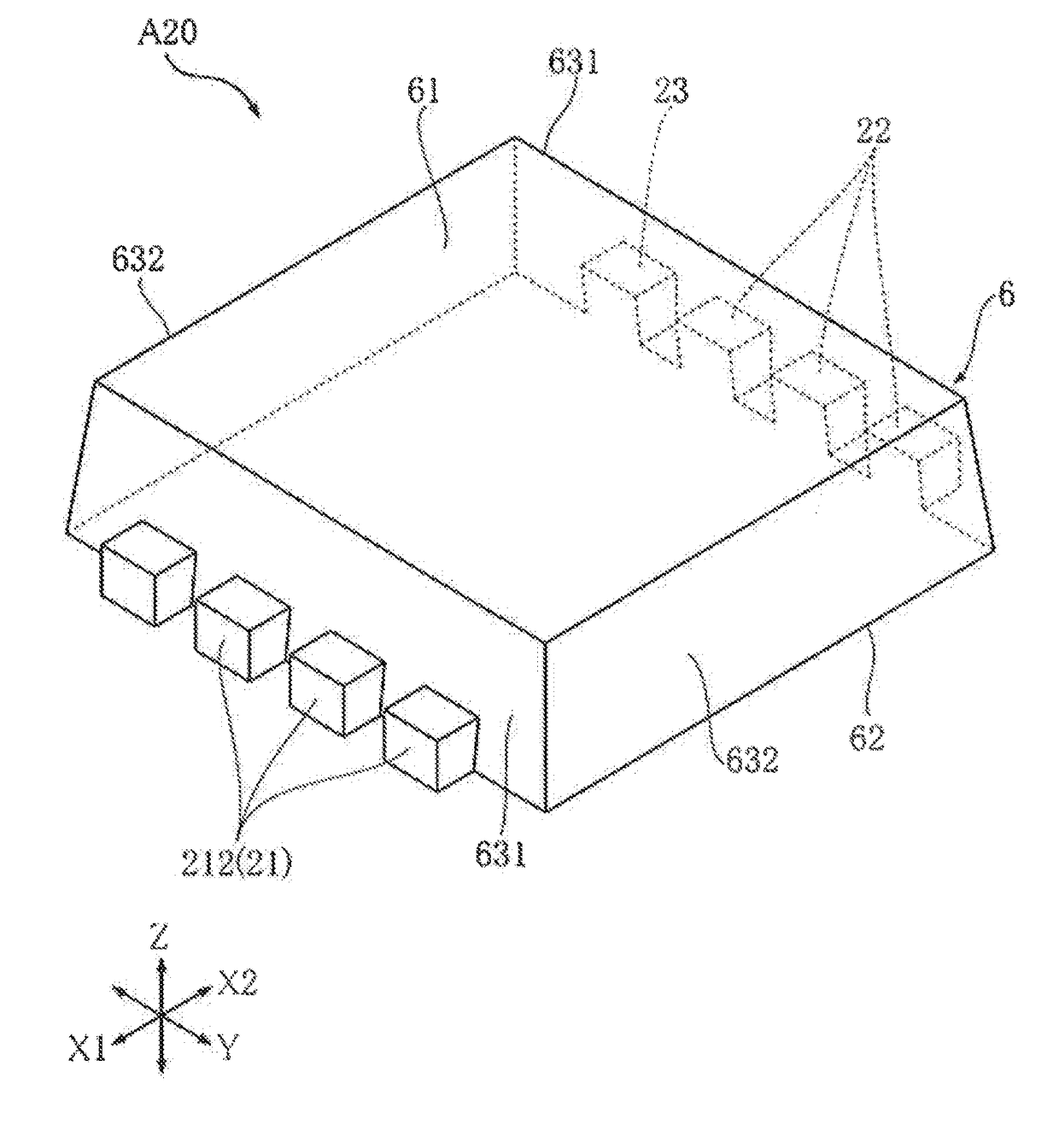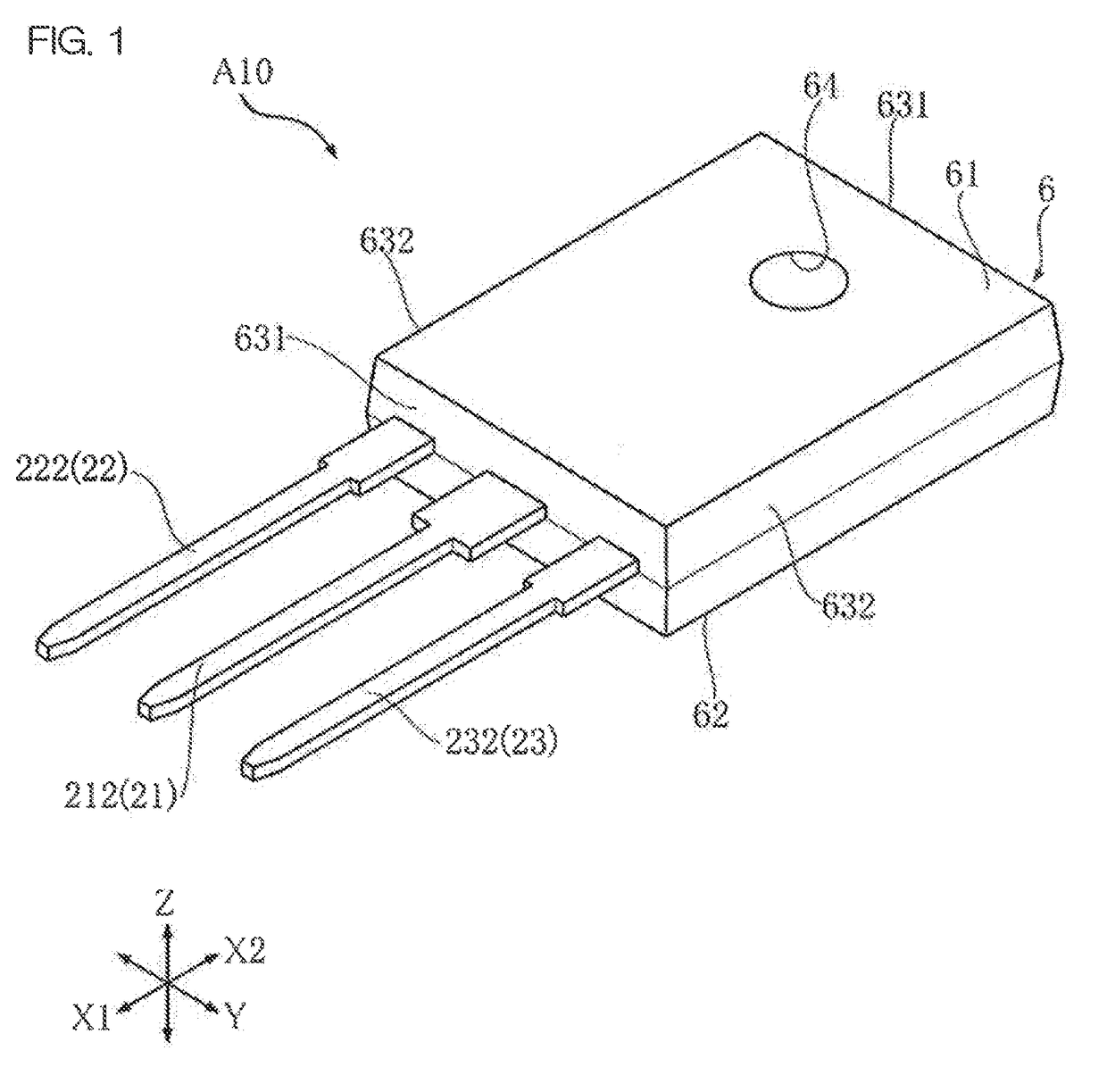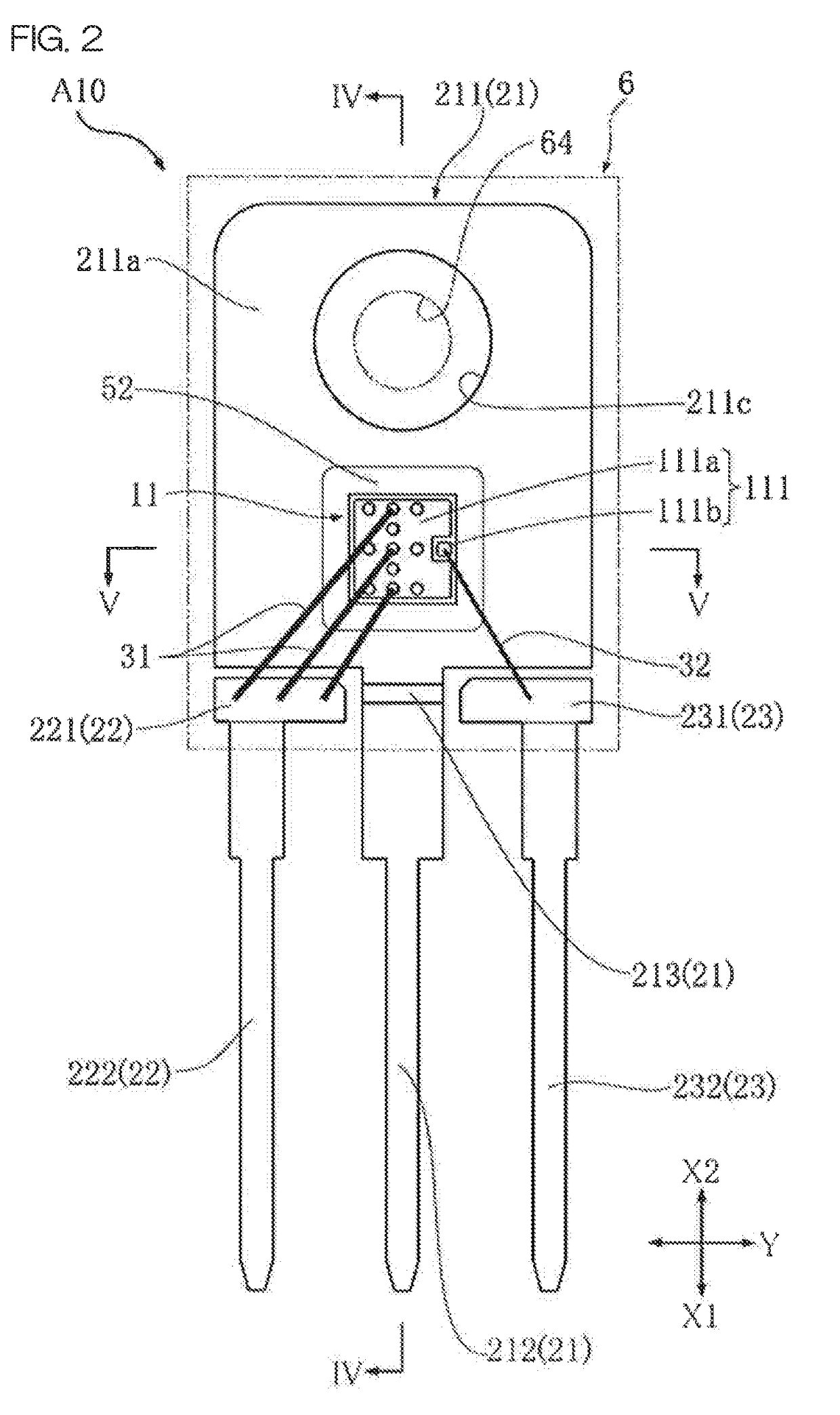Semiconductor device
a technology of semiconductors and devices, applied in the direction of semiconductor/solid-state device details, pulse techniques, diodes, etc., can solve the problems of easy breakdown of semiconductors, failures, and easy transient and local high temperature, and achieve relatively small heat generation, favorable suppression of temperature rise, and relatively high dynamic clamping capability
- Summary
- Abstract
- Description
- Claims
- Application Information
AI Technical Summary
Benefits of technology
Problems solved by technology
Method used
Image
Examples
first embodiment
[0043]A semiconductor package A10 according to a first embodiment of the present invention is described on the basis of FIGS. 1 to 8. The semiconductor package A10 includes a semiconductor device 11, a junction layer 12, a first lead 21, a second lead 22, a third lead 23, a first bonding wire 31, a second bonding wire 32, a plurality of heat releasing member 4, an externally plated layer 51, an internally plated layer 52, and a sealing resin 6. Hereinafter, the semiconductor package A10 may be referred to as a semiconductor device A10, and the semiconductor device 11 may be referred to as a semiconductor element 11.
[0044]FIG. 1 is a perspective view of a semiconductor package A10. FIG. 2 is a plan view of the semiconductor package A10. FIG. 3 is a bottom view of the semiconductor package A10. FIG. 4 is a cross-sectional view taken along the line IV-IV shown in FIG. 2. FIG. 5 is a cross-sectional view taken along the line V-V shown in FIG. 2. FIG. 6 is a plan view of a major part of ...
second embodiment
[0078]Description is made for a semiconductor package A20 according to a second embodiment of the present invention with reference to FIGS. 9 to 14. In these drawings, the same reference numerals are applied to the same or similar elements as those in the semiconductor package A10 described above to thereby avoid duplicate descriptions.
[0079]FIG. 9 is a perspective view of the semiconductor package A20. FIG. 10 is a plan view of the semiconductor package A20. FIG. 11 is a bottom view of the semiconductor package A20. FIG. 12 is a cross-sectional view taken along the line XII-XII (dashed-dotted line) shown in FIG. 10. FIG. 13 is a cross-sectional view taken along the line XIII-XIII shown in FIG. 10. FIG. 14 is a plan view of a major part of the semiconductor device 11 in the semiconductor package A20. The sealing resin 6 is omitted in FIG. 10 for the sake of understanding. The sealing resin 6 omitted in FIG. 10 is shown by an imaginary line (two-dot chain line).
[0080]The semiconducto...
PUM
 Login to View More
Login to View More Abstract
Description
Claims
Application Information
 Login to View More
Login to View More - R&D
- Intellectual Property
- Life Sciences
- Materials
- Tech Scout
- Unparalleled Data Quality
- Higher Quality Content
- 60% Fewer Hallucinations
Browse by: Latest US Patents, China's latest patents, Technical Efficacy Thesaurus, Application Domain, Technology Topic, Popular Technical Reports.
© 2025 PatSnap. All rights reserved.Legal|Privacy policy|Modern Slavery Act Transparency Statement|Sitemap|About US| Contact US: help@patsnap.com



